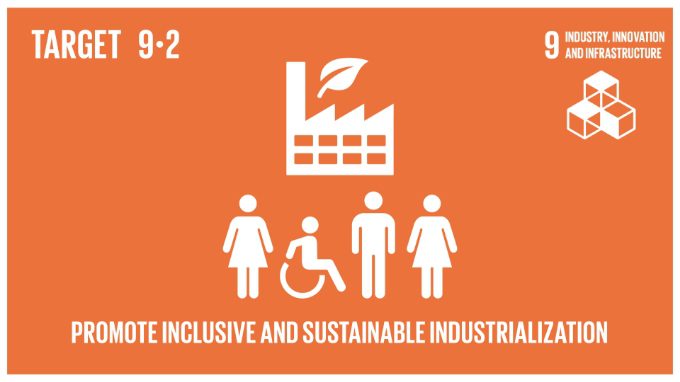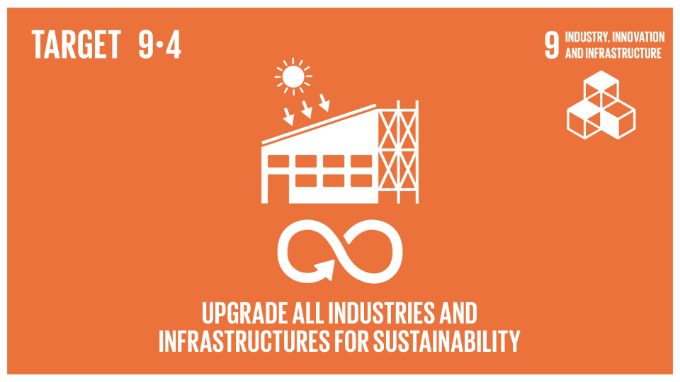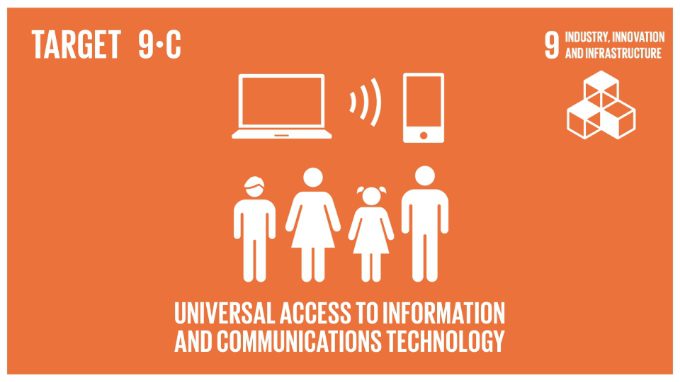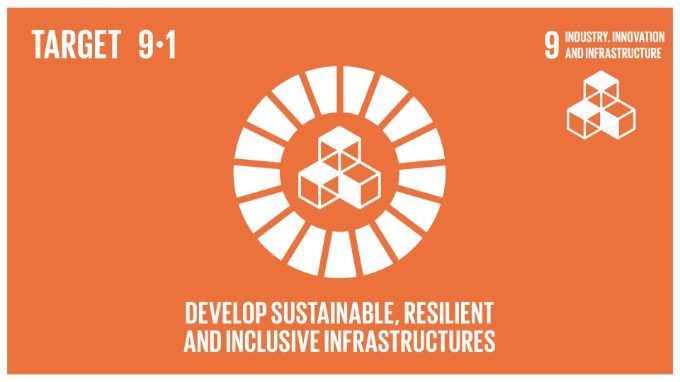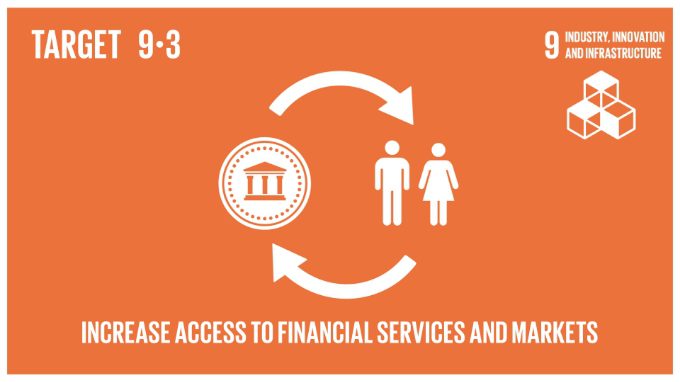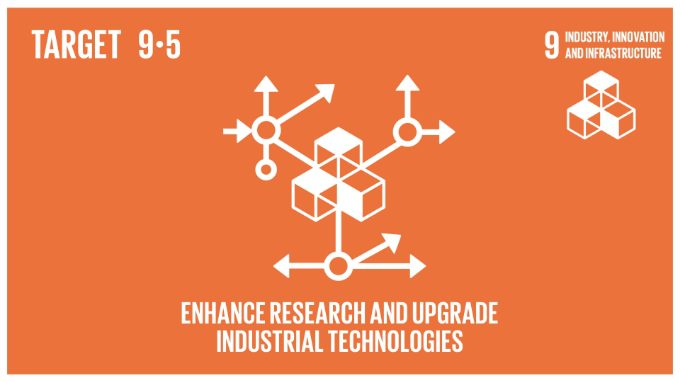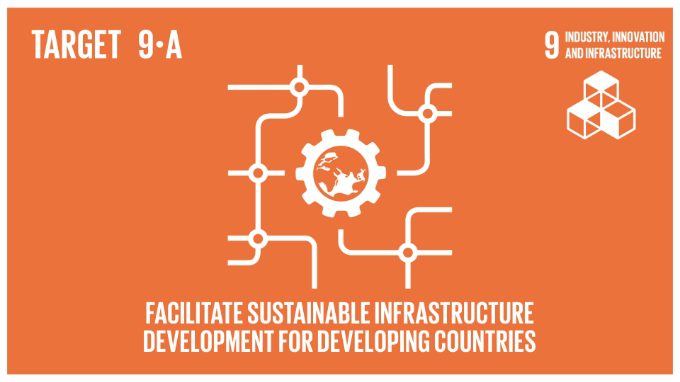Overview:
A functioning and resilient infrastructure is the foundation of every successful community. To meet future challenges, our industries and infrastructure must be upgraded. For this, we need to promote innovative sustainable technologies and ensure equal and universal access to information and financial markets. This will bring prosperity, create jobs and make sure that we build stable and prosperous societies across the globe.

International Progress 2023:
The manufacturing industry’s recovery from COVID-19 remains incomplete and uneven: some high-income regions achieved record-high manufacturing value added per capita in 2022 but levels in LDCs were not much higher than the 2015 baseline.
In the aftermath of the pandemic, data show that higher-technology industries recovered faster and proved to be more resilient, pointing to the need to promote innovation and technology transfer in a way that benefits all countries. To achieve Goal 9 by 2030 it is essential to support LDCs, invest in advanced technologies, lower carbon emissions, and increase global mobile broadband access.
Targets —
-

Target 9.2 (i)
Global manufacturing value added (MVA) per capita increased from $1,646 (constant 2015 prices) in 2015 to $1,875 in 2022. While Europe and Northern America reached an all-time high of $5,052 in 2022, MVA per capita in LDCs reached only $159, far from the target of doubling their value of $126 in 2015. Although the share of manufacturing in LDCs increased from 12.1% in 2015 to 14.0% in 2022, this pace is not sufficient to achieve the target of doubling the share by 2030. While LDCs in Asia have made considerable progress and are on track, African LDCs will need to significantly accelerate progress for the goal to remain attainable by 2030.
-

Target 9.2 (ii)
After a plunge in 2020, global manufacturing employment returned to the pre-pandemic level in 2021. However, the share of manufacturing employment in total employment continued to decline, falling from 14.3% in 2015 to 13.6% in 2021 worldwide.
-

Target 9.4
Global carbon dioxide (CO2) emissions from energy combustion and industrial processes grew by 0.9% in 2022 to a new all-time high of 36.8 billion tonnes. Emissions shrank by more than 5% in 2020, but rebounded past pre – pandemic levels in 2021, growing more than 6% in tandem with economic stimulus and a surge in coal demand even as renewables capacity additions scaled record heights. CO2 growth in 2022 was well below GDP growth of 3.2%.
-

Target 9.b
In 2022, the medium-high and high-technology industries experienced solid growth, mainly due to the recovery in the automotive sector and consistently strong production in sectors such as computers, electronics and optical products, and electrical equipment. However, the production of basic pharmaceuticals declined due to the COVID-19 situation and shortages of essential inputs. In 2020, sub-Saharan Africa and LDCs had low shares of medium-high and high-technology manufacturing, at 21.7% and 10.6% respectively, compared to 47.7% in Europe and Northern America and 47.1% in Eastern Asia.
-

Target 9.c
Mobile broadband (3G or above) access is available to 95% of the world’s population, while 4G coverage has doubled to 88% between 2015 and 2022. However, growth is slowing down, and connecting the remaining 5% is proving difficult. In Sub-Saharan Africa, the gap is 18%, predominantly affecting the population of Central and Western Africa. The coverage gap is almost the same in LDCs and LLDCs.
Ireland’s
Progress 2023:
Two key issues in this area are rural broadband and data centres. Access to high-speed broadband in Ireland has improved considerably in recent years, with 88.7% of the country connected to fibre in 2021. However, Census 2022 figures on Housing in Ireland shows that 20% of dwellings headed by someone aged 65 and over have no internet connection of any kind. This rate is higher among this age cohort who are living alone at 34%. This also continues to be insufficient broadband in many rural areas although efforts are being made to remedy this situation.
Dublin is the largest data centre hub in Europe. According to the Central Statistics Office (CSO) 2022 electricity consumption report, data centres in Ireland are now using the same amount of metered electricity as urban dwellings at 18%, and almost double the electricity of rural homes which rests at 10%. Eirgrid predict that this could be as high as 30% by 2030.
According to Dr Patrick Bresnihan of the National University of Ireland, Maynooth, in one day an average centre by itself uses:
- The same amount of energy as a town the size of Kilkenny (60 MW)
- Up to 500,000 litres of water to cool down its systems
- Potentially up to 5 million litres of water during a heatwave
Data centres are now consuming 31% more electricity than they were in 2021. There has been a 400% increase in electricity consumption by data centres from January to March 2015 to October to December 2022.
Targets —
-

Develop quality, reliable, sustainable and resilient infrastructure, including regional and transborder infrastructure, to support economic development and human well-being, with a focus on affordable and equitable access for all.
CSO data
Claim: Achieving
9.1.1 The average distance of residential dwellings in Ireland from the main road network (which accounts for 6% of the country’s roads network) was 4.7 kms (excludes Regional and Local Roads Network).
9.1.2 The total number of vehicles rose from 2,593,375 to 2,790,778 between 2015 and 2019. There were 2,168,099 private cars (78% of all vehicles) and 362,699 goods vehicles (13%) in 2019.
9.1.1
Proportion of the rural population who live within 2 km of an all-season road
9.1.2
Passenger and freight volumes, by mode of transport
-

Promote inclusive and sustainable industrialization and, by 2030, significantly raise industry’s share of employment and gross domestic product, in line with national circumstances, and double its share in least developed countries.
CSO data
Claim: Achieving
9.2.1 Gross Domestic Product (GDP) at constant market prices rose from €280.4 billion in 2015 to €377.4 billion in 2020. Over this time period, Gross Value Added (GVA) at constant basic prices for Manufacturing rose from €98.9 billion to €140.4 billion.
9.2.2 The number of people in employment rose from 2.079 million in Q1 of 2016 to 2.231 million by Q1 of 2021, an increase of 7.3%. Over this time period, the number of people in employment in the manufacturing sector rose by 13.4%, from 239,200 to 271,200.
9.2.1
Manufacturing value added as a proportion of GDP and per capita
9.2.2
Manufacturing employment as a proportion of total employment
-

Increase the access of small-scale industrial and other enterprises, in particular in developing countries, to financial services, including affordable credit, and their integration into value chains and markets.
CSO data
Claim: Achieving
9.3.1 The total value added in industry in 2019 was €112.1 bn. The vast bulk (86.5%) of this value added was in enterprises with 250 or more employees. Small-scale industries (less than 250 employees) accounted for around 13.5% of value added in manufacturing in 2019. Enterprises with 50-249 employees accounted for 8.3% of value added.
9.3.2 SME credit demand remained low compared to previous years (20% of SMEs applied over April to September 2019). SMEs did not apply for credit mainly due to sufficient funds but some report aversion to debt.
9.3.1
Proportion of small-scale industries in total industry value added
9.3.2
Proportion of small-scale industries with a loan or line of credit
-

By 2030, upgrade infrastructure and retrofit industries to make them sustainable, with increased resource-use efficiency and greater adoption of clean and environmentally sound technologies and industrial processes, with all countries taking action in accordance with their respective capabilities.
CSO data
Status: Slight increase in CO2 emissions post COVID-19
9.4.1 Industry-related CO2 emissions fell 5% between 2018 and 2019, from 6,694 ktCO2 to 6,330 ktCO2. Over this time period, CO2 emissions for the total economy declined by 4.5% from 39,095 ktCO2 to 37,349 ktCO2.
9.4.1
CO2 emission per unit of value added
-

Enhance scientific research, upgrade the technological capabilities of industrial sectors in all countries, in particular developing countries, including, by 2030, encouraging innovation and substantially increasing the number of research and development workers per 1 million people and public and private research and development spending.
CSO data
Claim: Achieving
9.5.1 Government funding of R&D in 2019 was €802.15m which represents an increase of 4.8% over the outturn figure for 2018.
9.5.2 There were 22,808 researchers (FTEs) working across all sectors in 2018 with numbers increasing since 2010.
9.5.1
Research and development expenditure as a proportion of GDP
9.5.2
Researchers (in full-time equivalent) per million inhabitants
-

Facilitate sustainable and resilient infrastructure development in developing countries through enhanced financial, technological and technical support to African countries, least developed countries, landlocked developing countries and small island developing States.
CSO data
Claim: Achieving
9.a.1 Ireland’s ‘Two-Year Average’ commitments to Total Official Development Assistance (ODA) in 2017-18 was $864 million (2017 USD million).
9.a.1
Total official international support (official development assistance plus other official flows) to infrastructure
-

Support domestic technology development, research and innovation in developing countries, including by ensuring a conducive policy environment for, inter alia, industrial diversification and value addition to commodities.
CSO data
Claim: Achieving
9.b.1 MHT value added accounted for 33.5% of total economy gross value added (GVA) at constant basic prices, in 2015, falling to 30.8% in 2017. This figure changed by less than 1% in 2018 and 2019 but rose significantly to 36.4% in 2020.
9.b.1
Proportion of medium and high-tech industry value added in total value added
-

Significantly increase access to information and communications technology and strive to provide universal and affordable access to the Internet in least developed countries by 2020.
CSO data
Claim: Achieving
9.c.1 In Q1 2021 there were 7,181,054 mobile subscriptions (including mobile broadband and M2M), an increase of just over 41,568 since Q4 2020.
9.c.1
Proportion of population covered by a mobile network, by technology



